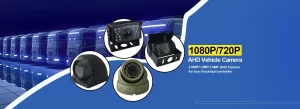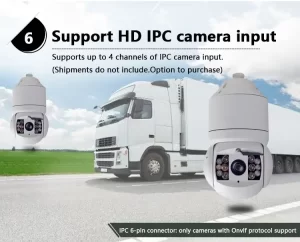Domestic and foreign needs and requirements for MDVR mainly revolve around driving safety, accident tracing, and vehicle management. With the development of science and technology and society’s emphasis on driving safety, the demand for MDVR is growing, and its requirements are more and more stringent and diversified.
In China, MDVR has been widely used in various types of vehicles such as taxis, buses and lorries as an important tool to ensure driving safety.In addition, private car users are gradually realising the importance of MDVRs and are beginning to see them as essential safety equipment.In terms of demand, in addition to the basic video recording function, users also want the MDVR to have high-definition picture quality, night vision function, collision sensing auto-save and other functions.In terms of requirements, MDVRs need to comply with relevant national standards, such as 3C certification, to ensure their quality and safety.
In the international market, MDVRs are in equally strong demand.Especially in some countries and regions with strict traffic regulations and high requirements for driving safety, MDVR has almost become a standard feature of vehicles.In terms of requirements, in addition to the basic video recording function, the international market also has high requirements for the stability and durability of MDVRs.At the same time, some high-end MDVRs are also required to have functions such as intelligent identification and automatic alarms to meet more complex driving safety needs.
International and national policies on MDVR vary by region and context.Generally speaking, however, these policies revolve around enhancing road safety and promoting the development of traffic surveillance technology.Below is an overview of some international and national policies on MDVR:
Domestic policy: With the rapid development of automotive intelligence and internet connectivity, MDVR is receiving more and more attention as a core device to ensure driving safety and enhance driving assistance.Some local governments have published regulations and policies requiring vehicles to be equipped with MDVRs to improve road safety and surveillance efficiency.Meanwhile, the government also encourages technological innovation and industrial upgrading to promote the rapid development of the car video recorder industry.
In terms of international policies, policies on MDVRs vary from country to country and region to region.Some countries have enacted stringent road safety regulations that require vehicles to be fitted with MDVRs to record the driving process and serve as an important basis for accident handling.In addition, some countries have encouraged the development and application of MDVR technology by providing policy support such as subsidies or tax incentives.
Domestic and international certification mechanisms and documents on MDVRs
Domestic and international certification mechanisms and documents on MDVR (Car Recorder) focus on the quality and safety of the product to ensure its compliance in the market. The following are some of the major certification mechanisms and documentation requirements:
Domestic accreditation mechanisms and documentation:
In China, MDVRs are subject to 3C certification, the “Compulsory Product Certification System”.This is a product conformity assessment system implemented by the Chinese government to protect the personal safety of consumers and national security and to strengthen product quality management.For products that have not obtained a compulsory product certification certificate shall not be sold.
The 3C certification standards for car recorders are GB 8898, GB 13837, GB 17625.1. The specific certification process includes:
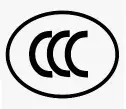 1. Prepare raw materials and submit the application.
1. Prepare raw materials and submit the application.
2. Send samples for testing.
3.Issue the certificate after passing the sample test report.
4.Conduct initial factory inspection within 3 months after obtaining the certificate.
In addition, depending on the specifics of the product, other types of certification may be required, such as CQC certification, CTA network access certification, and so on.
International accreditation mechanisms and documents:
For MDVRs exported to other countries, they also need to meet the certification requirements of the corresponding countries.For example, various foreign markets have a series of mechanisms and certification requirements for MDVRs (car recorders) to ensure product quality and safety.These requirements are largely based on the country’s economic and safety standards and are designed to protect consumer rights, promote fair competition and enhance road safety.
European market: CE, RoHS, GS, CB, E-Mark, ErP, REACH, EN71 and other certifications. The most common of them are E-mark certification and CE certification.
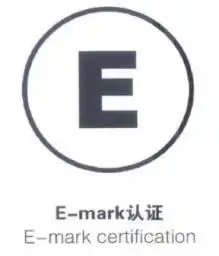
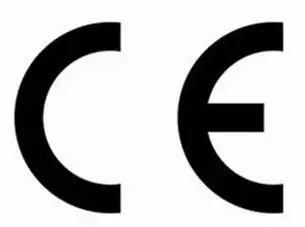
E-mark Certification: This is the testing and certification of all MDVRs entering the European market in accordance with the provisions of the ECE Regulation (ECE Regulation). Products that meet the certification requirements will be awarded a certificate of conformity and imprinted with the E-mark. Products with the E mark can only be sold in ECE member states, and certificates issued by any one member state can be recognised in other member states.
CE marking: CE marking is regarded as a passport for manufacturers to open and enter the European market. It represents that the product meets the basic requirements of the EU’s “New Approaches to Technical Harmonisation and Standardisation” directive, and is a mandatory certification mark for products entering the EU market.
Certification Process
For E-mark certification, the process usually includes submitting an application, preparing information, sending samples for testing, preparing a report, auditing and submitting, and issuing a certificate. For CE marking, manufacturers need to ensure that their products comply with the requirements of the relevant directives and prepare the corresponding technical documents and test reports.
Certification Requirements
During the certification process, in-car video recorders need to fulfil a number of technical and safety requirements. This includes tests on electromagnetic compatibility, electrical safety, protection levels, functional performance and more. At the same time, the product design, manufacturing and quality control system also need to comply with the relevant standards.
American market: FCC, FDA, UL, ETL, CSA, IC, CPSIA and other certifications.
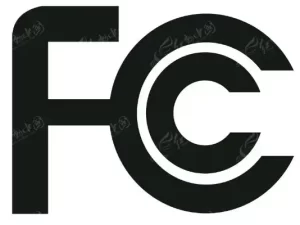
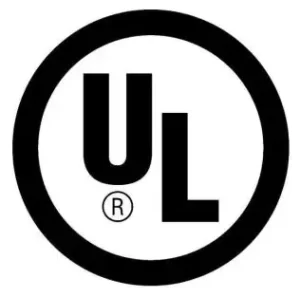
FCC Certification: For the US market, FCC certification is critical. The U.S. Federal Communications Commission (FCC) regulates wireless communication devices to ensure that these devices do not interfere with other radio equipment when using radio frequencies.FCC certification involves testing a product for electromagnetic compatibility (EMC) to ensure that it complies with U.S. radio spectrum management regulations. With FCC certification, the product receives an FCC ID, which is necessary for the product to be sold in the U.S. market.
UL Certification: UL Certification is another common certification in the Americas market.UL (Underwriters Laboratories) is an independent, third-party safety science company that offers a wide range of product safety certification services. UL certification for car video recorders demonstrates compliance with relevant safety standards and reduces the risks associated with product safety issues.
FDA Approval: If the in-car VCR has a camera or vision-related features, especially for applications related to medical use, then it may also need to be considered for approval by the U.S. Food and Drug Administration (FDA).FDA approval applies primarily to medical devices and some products related to image processing to ensure their safety and efficacy.
Other certifications: Depending on the characteristics and use of the product, other certifications or approvals may need to be considered. For example, if the car video recorder includes a GPS module, then the National Oceanic and Atmospheric Administration (NOAA) certification may need to be considered.
The Americas market has more stringent certification mechanisms and documentation requirements for in-car video recorders, designed to ensure product quality and safety. Manufacturers need to carefully understand and comply with these requirements in order to enter and succeed in the Americas.
Asian market: PSE, KC, Telec and other certifications.

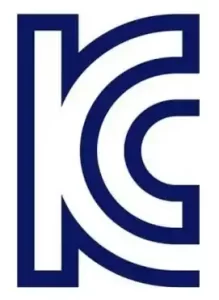
PSE Certification: For the Japanese market, in-car VCRs are required to be PSE certified, which is a certification requirement under Japan’s electrical product safety regulations, and the product must meet its electrical safety regulations to ensure the safety of the user.
KC Certification: For the Korean market, KC certification is required, KC certification is a mandatory safety certification system for electrical and electronic products in Korea, and only products with KC certification can be sold in the Korean market.
Australian market: C-Tick, SAA, MEPS and other certifications.
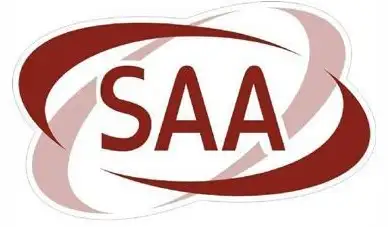

SAA Certification: This is a safety certification mark that represents the mandatory certification of electrical products in Australia. Before a car recorder can be sold in Australia, it must comply with Australian electrical safety standards and obtain SAA certification. The process of applying for SAA certification usually includes submitting samples for testing, submitting an application form, arranging for payment of money, waiting for the Australian organisation to audit the report, and obtaining the certification after the audit has been passed.
C-Tick Certification: In addition to the safety marking, electrical and electronic products must have the EMC mark, known as the C-Tick mark, when entering the Australian market. The purpose of this mark is to protect the resources of the radio communication band, similar to the European EMC Directive. Before applying for the C-Tick Mark, manufacturers or importers are required to conduct tests in accordance with the relevant CISPR standards and have their products endorsed and reported by the Australian importer. The application will then be accepted by the Australian Communications Authority (ACA) and a registration number will be issued.
These certifications not only focus on product quality and safety performance, but also involve electromagnetic compatibility, environmental requirements and many other aspects. The specific certification process and requirements may vary from country to country and from certification body to certification body.
It should be noted that with the continuous development of technology and changes in market demand, certification standards and requirements may also be updated and adjusted. Therefore, the relevant enterprises should pay close attention to the latest certification developments and changes in standards to ensure that products always meet the certification requirements of domestic and foreign markets.
Overall, the certification mechanism and documentation requirements for MDVRs cover a wide range of aspects, and companies need to fully understand and comply with the relevant regulations to ensure product compliance and market competitiveness.
In addition, with the development of Telematics technology, MDVRs have begun to integrate with other systems of the vehicle, such as navigation systems and driver assistance systems. This makes the functions of the vehicle video recorder more comprehensive, and also puts forward higher requirements for its technical level and integration capability.

